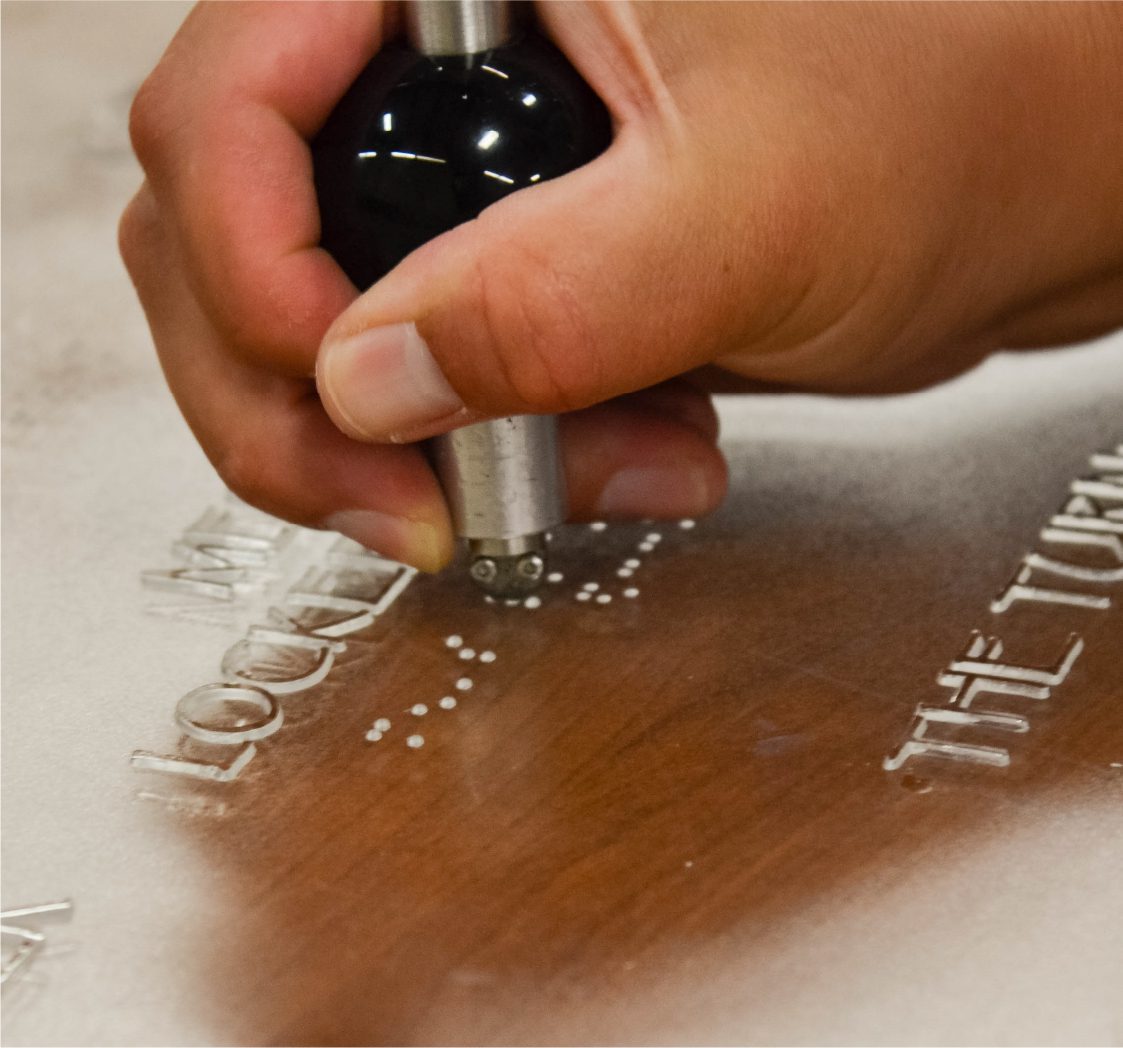How Are Signs Built to be Vandalism-Proof?

When your architectural signage is vandalized, it would seem that your only options are either to cover-up the vandalism or replace the sign altogether. But, did you know you can actually purchase signage that is manufactured to be vandalism-proof?
A single incident of vandalism can cost your business an average of $3,370, according to the U.S. Small Business Administration.
Identity Group offers thermoformed signage, a signage design that is built to be vandal-proof. We also build applied tactile and photopolymer signs, which are vandal-resistant.
So, how does it work?
- Compression Technology
- Vandal-Resistant: The Applied Tactile Sign
- Vandal-Resistant: The Photopolymer Sign
- Vandal-Proof: The Thermoformed Sign
- Be Proactive About Vandalism
Compression Technology
It might be helpful to first explain compression technology. Identity Group uses compression technology for building all of our signs. It is a three-step process, but the specific steps vary slightly depending on the desired appearance and finish.
The specifications that make each sign different are as follows:
- Laser-cut text and braille beads to build an applied tactile sign
- Raised text and braille beads to build a photopolymer sign
- Raised copy, symbols, and braille to build a thermoformed sign, using a mold
Obviously, the signs undergo different manufacturing to achieve different finishes and textures. But how might these designs benefit a company that wants to be proactive about vandalism?
Vandal-Resistant: The Applied Tactile Sign
The applied tactile sign is built by precisely laser-cutting text that is then adhesive-applied to a sign substrate, along with corresponding inset braille beads. With Identity Group’s Alchemy textile, we fully fuse text and graphics in standard and custom colors, metal, or real wood on a variety of substrates.
The applied tactile sign is not only difficult to deface because of the permanent fuse, but also because of other features you may choose for your sign, such as process-cured ink, laser fabrication, and injection molding.
Vandal-Resistant: The Photopolymer Sign
In order to build a photopolymer sign, a digital image is converted into a negative, which is transferred to a photopolymer sheet. The lettering is also black, because color will not be added until the end. The photopolymer sheet is then exposed to ultraviolet light, is washed, dried, and exposed a final time. Lastly, a clear film is applied, which includes any color.
Identity Group’s patented photopolymer design is vandal-resistant because the features are all one-piece. Our acrylic signs have fused, raised text and inset braille beads. Any letters or features, then, cannot be peeled off.
Vandalism-Proof: The Thermoformed Sign
Compared to the other sign types, a single step in the creation process sets thermoformed signs apart: the use of a mold. During compression, the acrylic sign is pressed into a custom-routed mold under high heat to achieve raised copy, symbols, and braille.
The tactile copy and braille on a thermoformed sign are very difficult to remove because they are permanently embedded into the acrylic. This also gives thermoformed signs a rich, textured appearance. IDG can create fully-fused text and graphics using custom or standard colors, and metal or real wood, on a wide variety of substrates.
Be Proactive About Vandalism
Regardless of the industry you’re in, you will want to be proactive about vandalism, such as the defacing of your signage.
Shop Identity Group’s vandal-resistant and vandal-proof signage today!
